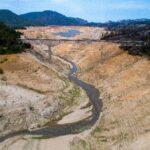Guest Post by Jeanine Jones, Interstate Resources Manager, California Department of Water Resources
Water Year 2023 was notable for ending the 2020 – 2022 drought, California’s driest consecutive three-year period, with one of the state’s snowiest years. This rapid change in water supply conditions was not predicted by the National Weather Service (NWS), reflecting the difficulty of forecasting precipitation outcomes at time scales longer than a weather forecast (at most, ten days to two weeks).
Subseasonal to seasonal forecasts, or S2S (forecasts extending from two weeks to a year or more) would be hugely useful for managing the extremes of floods and droughts if the forecasts were skillful. The NWS has been issuing S2S outlooks since the mid-1990s, but the outlooks cannot be used for water management decision-making because their skill is too low. S2S forecasting is scientifically challenging and requires investment in research.
Congress has begun work on reauthorization of the Weather Research and Forecasting Innovation Act (Public Law 115-25). H.R. 6093 was reported by the House Committee on Science, Space, and Technology in December; the Senate has not yet introduced its reauthorization bill. The 2017 Act had required the National Oceanic and Atmospheric Administration (NOAA) to improve S2S forecasting, and NOAA had submitted a report to Congress on needed actions as required by the Act. Subsequently NOAA did not implement the pilot project for improving western U.S. precipitation forecasting for water management it had recommended in its report to Congress and did not seek funding for the project in the federal budget process. H.R. 6093 would specifically require NOAA to implement the western pilot and would authorize sufficient funding for the effort.
Seed money research forecasting projects funded by the Department of Water Resources (DWR) have illuminated reasons why NWS outlooks have been unsuccessful (over-reliance on El Niño – Southern Oscillation conditions (ENSO), for example) and pointed out potential statistical modeling approaches for improving forecasts made with complex dynamical weather or climate models. A recent blog post from the Public Policy Institute of California (https://www.ppic.org/blog/seasonal-weather-predictions-are-elusive-in-california/) highlighted DWR-funded research about ENSO’s limited role in affecting California precipitation. ENSO status is presently a prime indicator the NWS uses in its preparation of precipitation outlooks. Modifying the dynamical models used by NWS and improving its precipitation forecasting requires sustained commitment of federal resources.
More information about improving S2S forecasting is available on the S2S Precipitation Forecasting Coalition website at https://www.s2sforecasting.org/.
Water Year 2023 – NWS Seasonal Precipitation Outlook Compared to Observed Precipitation
What is S2S?
Subseasonal to seasonal (S2S) forecasts are forecasts that extend beyond a short-term weather forecast (forecasts made 10 days to two weeks in advance). The Weather Research and Forecasting Innovation Act (Public Law 115-25), defines subseasonal as two weeks to three months and seasonal as three months to two years.

